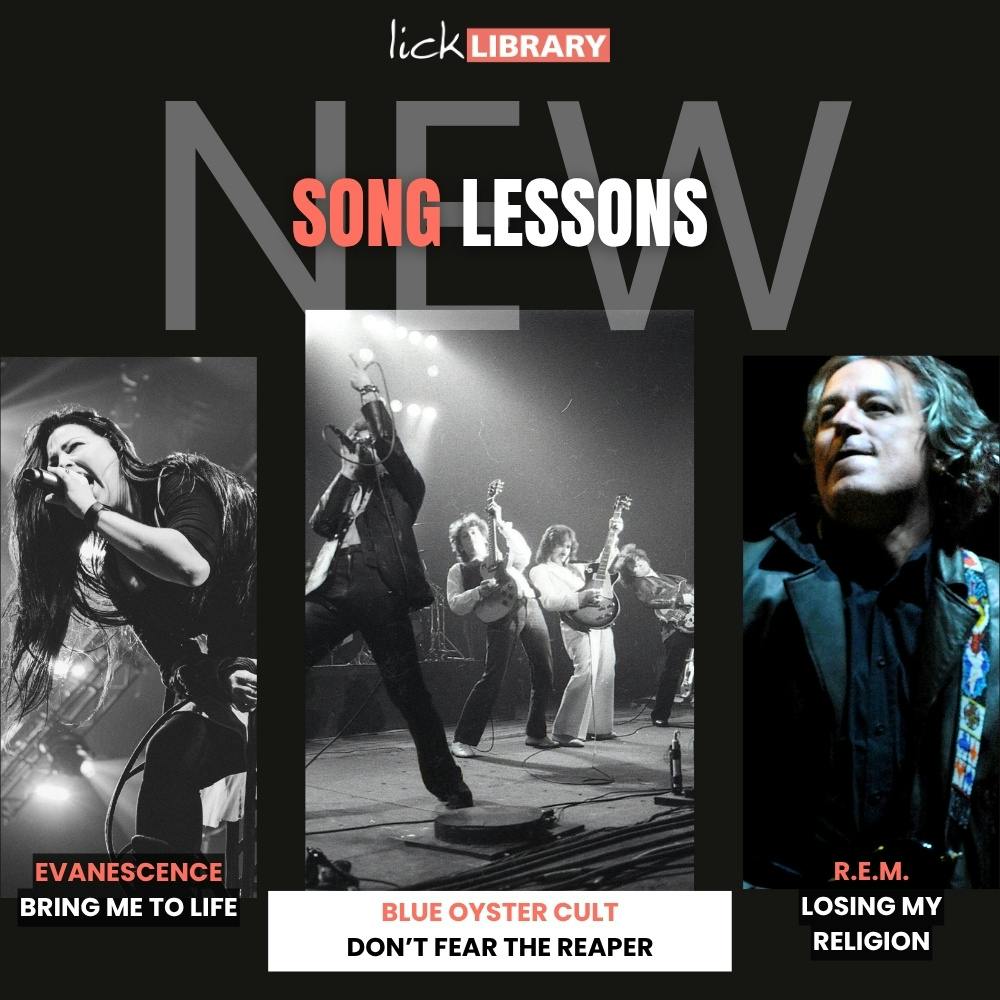Start Me Up – Rolling Stones
Learn to play “Start Me Up” by The Rolling Stones with our note-for-note guitar lesson at Licklibrary.com. This lesson breaks down every riff, rhythm, and lick from the Stones' iconic 1981 hit, helping players of all levels understand the techniques that made this track a staple of classic rock radio. Whether you’re a beginner looking to get into rock guitar or an intermediate player hoping to fine-tune your rhythm and groove, this song is the perfect vehicle to develop key techniques that every guitarist should master. Danny Gill breaks down this classic track in this exclusive Lick Library video tutorial.
About the Song and Guitarists
"Start Me Up" is built around one of the most instantly recognisable opening guitar riffs in rock history. The song was written by Mick Jagger and Keith Richards, with Richards taking centre stage as the song’s main guitarist. Known for his raw, rhythm-driven style, Keith’s playing in "Start Me Up" is a masterclass in groove, feel, and tone. His unique approach—often using open tunings and syncopated rhythm work—has influenced generations of guitarists in genres ranging from rock and punk to indie and alternative.
Richards’ loose, almost conversational way of playing rhythm guitar is a hallmark of the Stones’ sound. His riffs don’t just support the vocal—they drive the whole song. The techniques used in "Start Me Up" capture his signature swagger and offer great learning value for players looking to sharpen their rhythm playing and tonal control.
Song Breakdown & Techniques
Open-String Riffs
One of the standout features of "Start Me Up" is the open-string riff that kicks off the song. This riff makes clever use of ringing open strings alongside fretted notes to create a full, jangly sound that cuts through the mix.
Why it's useful: Mastering open-string riffs teaches players how to add depth and sustain to their rhythm work without relying on effects. It improves finger placement and teaches the importance of muting strings to keep things clean.
Syncopated Rhythms
The groove of the track is driven by syncopated rhythms, which emphasise off-beats and give the song its infectious, rolling feel. This is a hallmark of Keith Richards’ playing and gives the guitar a strong rhythmic identity within the band.
Why it's useful: Learning syncopated rhythms improves timing, internal pulse, and strumming accuracy. It’s especially beneficial for players looking to develop a tighter rhythmic feel in both lead and rhythm guitar contexts.
String Bending and Bluesy Phrasing
Throughout the lesson, you’ll find subtle but expressive string bending and bluesy phrases woven into the fills and solo moments. These add melodic interest and attitude to the otherwise steady rhythm structure.
Why it's useful: Practicing string bends refines intonation and finger strength. Bluesy phrasing, including bends and slides, helps players build emotion and character in their solos and fills.
Slides and Double Stops
Keith often uses slides and double stops to build texture in his riffs. These give the song a gritty, slightly loose feel that’s crucial to the Stones’ raw rock sound.
Why it's useful: Slides help with fretboard navigation and smooth transitions between notes, while double stops teach players how to harmonize melodies and add impact to their rhythm work.
Chord Progressions and Barre Chords
The track's structure is based on a simple but effective chord progression that leans heavily on barre chords to maintain a consistent tone and voicing.
Why it's useful: Understanding chord progressions boosts songwriting and improvisation skills. Barre chords improve hand strength and open the door to playing songs across the neck in different keys.
Palm Muting for Groove Control
To keep the groove tight, especially during verse sections, palm muting is used to add dynamics and create space in the arrangement.
Why it's useful: Palm muting is essential for dynamic control and articulation. It helps players understand how to create contrast within their rhythm parts and add professional polish to their playing.
Summary
This lesson on “Start Me Up” is more than just a breakdown of a rock classic—it’s a gateway to understanding how rhythm, feel, and tone come together in great guitar playing. With its open-string riffing, syncopated rhythms, and expressive articulations, this track offers valuable insights for every guitarist. Whether you're trying to lock into a groove, develop better rhythm control, or understand classic rock guitar stylings, learning this song will serve you well.
Techniques Covered
Here is a list of the guitar techniques covered in our “Start Me Up” lesson:
- Open-string riffs
- Syncopated rhythms
- String bending
- Slides
- Double stops
- Chord progressions
- Barre chords
- Palm muting
- Bluesy bends
Explore these techniques and more with LickLibrary's comprehensive lesson on “Start Me Up” and bring a piece of rock history to your own playing arsenal.

About The Tutor
Tutor Profile
Danny Gill
Danny Gill is, without a doubt, the most loved tutor by our community. With an incredible array of DVDs and web lessons for LickLibrary covering a wide variety of topics all of which he covers with incredible detail, it's no wonder he carries as much respect as he does. As...




